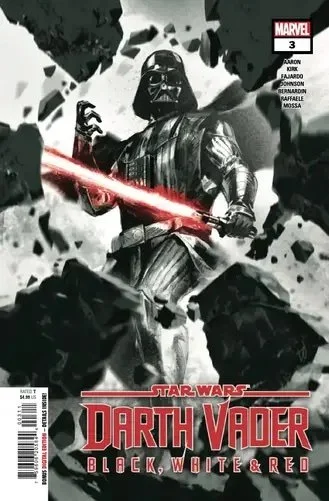Transformers #16 // Review
Megatron has failed countless times. He’s been through losses far too numerous to count. On the whole, though, the losses haven’t really ever been TOO devastating. In an endless war with the Autobots, his side has never suffered too many casualties. Still...a record of failure that goes as far back as it does for him isn’t exactly something that’s going to be all that easy to deal with. He’s got some aid coming to him, though, in Transformers #16. Writer Daniel Warren Johnson and artist Ludo Lullabi take Megatron through a very brutal training in an issue that focusses exclusively on him.
Before the first trial, Megatron doesn’t even know where he is. His captor wastes little time in telling him that he has been captured. The name of his captor is Dezimir. He’s taken Megatron away from Cybertron for a great trial. He’s lying, of course.. It’s not just going to be one trial. It’s not just going to be two. Or a dozen. It’s going to be som much more than that and it’s going to be so much more than anything. Dezimir doesn’t know who he’s dealing with, though. One does not endure the kind of failure that Megatron has over the years and come through without a tremendous amount of perseverance. Megatron just might prove to be a surprise.
Daniel Warren Johnson has found a pretty sharp way to cast a supervillain in a new light. Like any arch villain who has been around for decades, Megatron has been through decades of failure. Take a character like that under a microscope and give him the kind of brutality he has coming to him and you just might have a fascinating look at the psychology of the supervillain. If you’re contractually obligate to fail every time by some unseen corporate mangate...that’s going to do something to you. It’s a fun bit of insight that Johnson is working with.
Of course...the concept of a training that goes through over 500 trials is fun. There isn’t really going to be any way to frame it that’s going to be able to overcome the sense of repetition about it. Lullabi’s art is dynamic enough to make it work, though. Megatron’s character design is iconic enough to withstand the micros coping close-up of a full issue that doesn’t feature a whole lot other than him. Lullabi has a firm grasp of the kind of overkill brutality that is absolutely necessary to deliver the right kind of intensity to a very novel approach to the super-villain close-up.
Few villains have had the kind of focus that Megatron has had over the decades. Most traditional comic book supervillains are in heavy rotation with the rest of a rogue’s gallery. Megatron has been working full-time against Optimus Prime for a very, very long time. This puts Johnson and Lullabi in an interesting position to be able to define him in a way that might add some new depth. It’s a fun idea that is well-executed.










